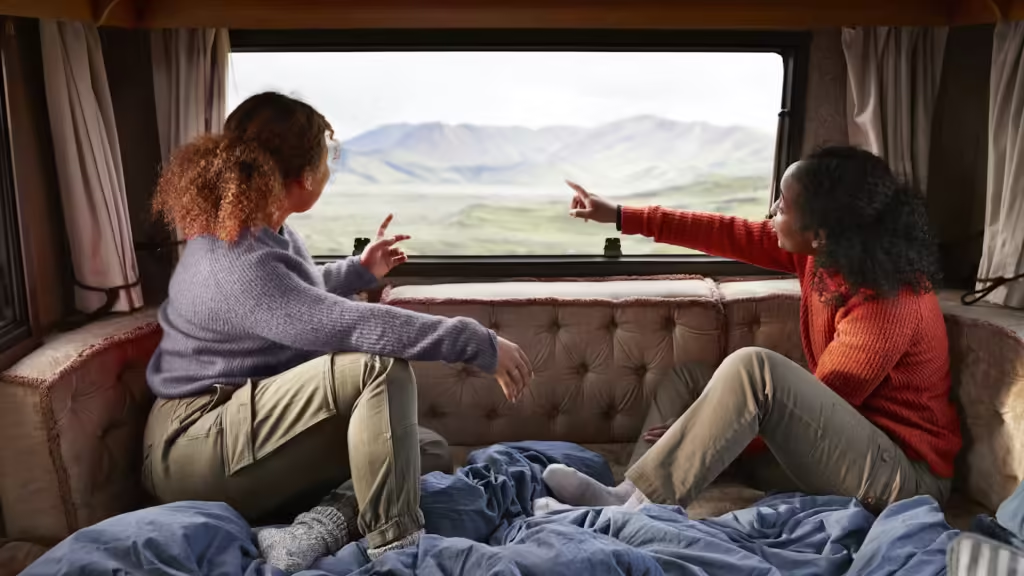Key Takeaways:
- Learn essential safety tips for traveling through Iceland’s volcanic regions in a camper van.
- Understand the importance of preparation and local guidelines for a safer journey.
- Discover how to make the most of your adventure while minimizing risks.
Understand the Terrain
Iceland’s volcanic landscapes testify to nature’s raw and untamed power. Travelers venturing into these intriguing regions, especially in camper vans, must develop a keen understanding of the terrain. Iceland’s unique geological formations are:
- Products of millennia of volcanic activity.
- Featuring expansive lava fields that stretch for miles.
- Bubbling hot springs.
- Towering craters.
While breathtakingly beautiful, these areas can present substantial risks if not navigated with care and knowledge. Resources like the Iceland volcano blog offer valuable insights into the island’s fiery attributes and provide practical advice for exploring these regions safely. This understanding enhances your travel experience and significantly minimizes potential hazards associated with these unpredictable landscapes.
Regularly Check Weather Updates
Iceland’s weather is notorious for its unpredictability, changing dramatically within short periods. This variability is especially pronounced in volcanic regions, where microclimates can cause sudden and severe weather shifts. Therefore, it’s imperative to regularly check the weather updates each day before embarking on your journey. Local meteorological services such as the Iceland Meteorological Office provide up-to-date forecast information, including warnings for storms, high winds, and heavy precipitation that are common in these areas. Regularly monitoring these weather conditions is crucial for avoiding dangerous situations, particularly when navigating remote regions in a camper van where seeking immediate shelter may not be feasible. Preparing for abrupt weather changes can ensure a safer and more enjoyable adventure.
Equip Yourself Properly
Traveling through Iceland’s volcanic regions requires more than just a reliable camper van; it demands thorough preparation and appropriate gear. First and foremost, ensure your attire includes sturdy hiking boots and weather-resistant clothing capable of protecting you from the harsh Icelandic elements. Navigation tools such as GPS devices can be crucial, especially in areas with poor visibility or limited landmarks. It’s also essential to carry emergency supplies, including a fully stocked first aid kit, ample water, and non-perishable food items. These supplies can be lifesaving in case of unexpected delays or emergencies. For your camper van, equip it with spare tires, necessary tools for minor repairs, and extra fuel to cover long distances between refueling stations. Properly equipping both yourself and your vehicle can significantly enhance your ability to handle emergencies and make the most out of your volcanic exploration.
Follow Volcanic Activity Reports
Given the dynamic nature of Iceland’s volcanic regions, staying informed about volcanic activity is crucial. Regularly checking updates from reliable sources that monitor seismic and volcanic activity can provide you with real-time information about potential hazards. The Icelandic Met Office is an excellent resource for tracking active volcanoes and receiving alerts on potential eruptions. They offer comprehensive data on seismic activity, including patterns that may indicate impending eruptions. Understanding the current volcanic activity allows you to plan your journey wisely, avoiding areas that pose significant risks. In addition to the Icelandic Met Office, various scientific institutions and research organizations—such as those documented by National Geographic—offer valuable insights into the complex behaviors of volcanoes. By staying updated with these reports, you can make more informed decisions and adapt your plans to ensure your safety.
Acknowledge Local Guidelines
Adhering to local guidelines and regulations is paramount for anyone venturing into Iceland’s volcanic terrains. These guidelines are established by local authorities to ensure your safety and the preservation of the environment. They provide critical information, including designated safe areas, restricted zones, and permissible activities. Pay close attention to signs, barriers, and advice provided at visitor centers, often including updates on current volcanic activity and specific precautions. Ignoring these guidelines compromises your safety and threatens the fragile ecosystems unique to volcanic regions. Engaging with local rangers and guides can further enhance your understanding of the terrain. Their intimate knowledge of the area can provide firsthand advice and localized tips invaluable for a safe and responsible journey.
Prepare for Emergencies
Emergencies in Iceland’s volcanic regions can arise without warning, making preparation necessary. Familiarize yourself with emergency procedures and keep a list of crucial contacts, including local authorities, rescue services, and medical facilities. Ensure your mobile phone is always charged, and for extra safety, consider carrying a satellite phone, especially in areas with limited cellular coverage. When traveling with others, set up a clear communication plan to ensure everyone stays connected in case of an emergency. Additionally, attend to your camper van’s maintenance before your trip. Regular checks and servicing can prevent breakdowns in remote areas where access to help might be delayed. Establishing a robust emergency plan provides peace of mind and enables you to respond effectively should an unexpected situation arise.
Embrace Sustainable Practices
Iceland’s pristine natural environment requires travelers to adopt sustainable practices and respect local conservation efforts. Embrace sustainability by minimizing waste, using eco-friendly products, and respecting wildlife and natural habitats. Avoiding off-

Asad Arshad, a prolific author of over 50+ websites across various niches, is open to collaboration opportunities. 🌐 For guest posts, reach out to him to benefit from his vast expertise and connect with a diverse audience. 📬




